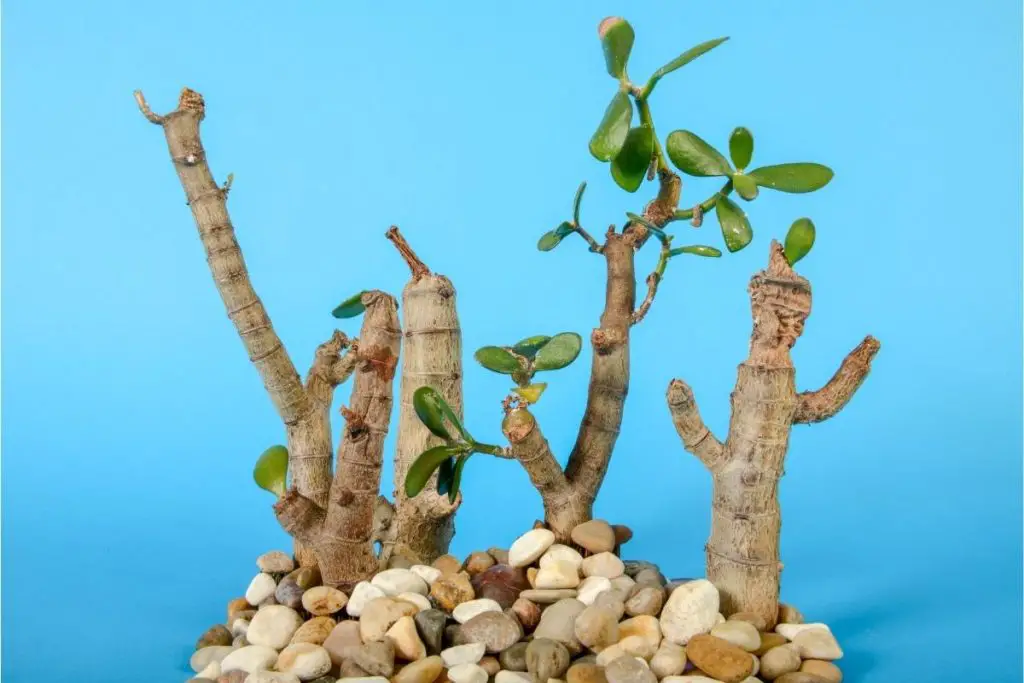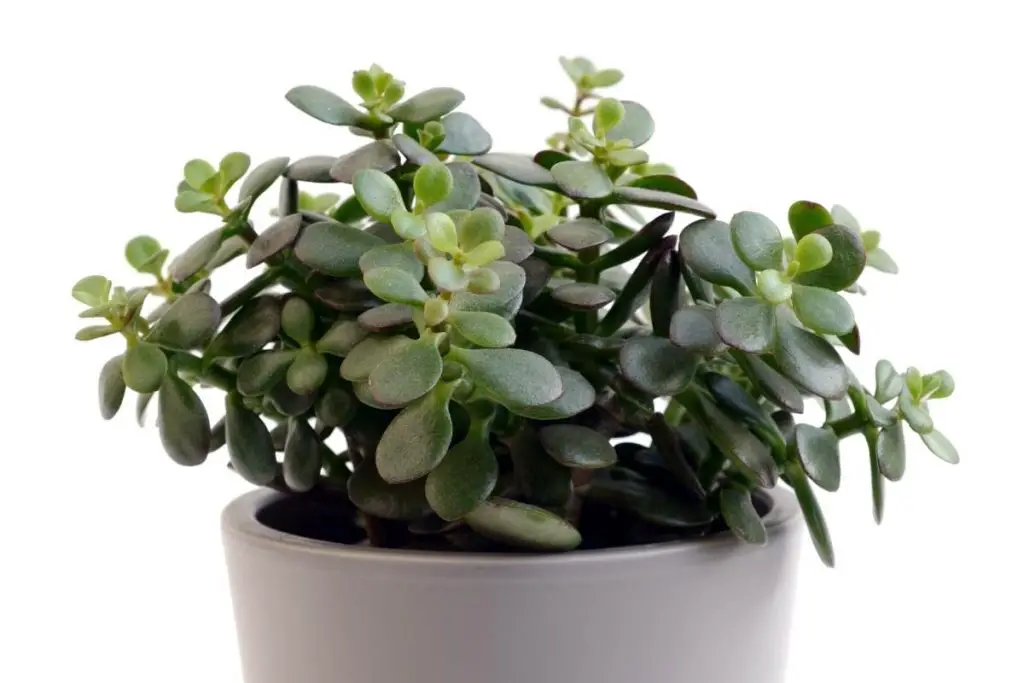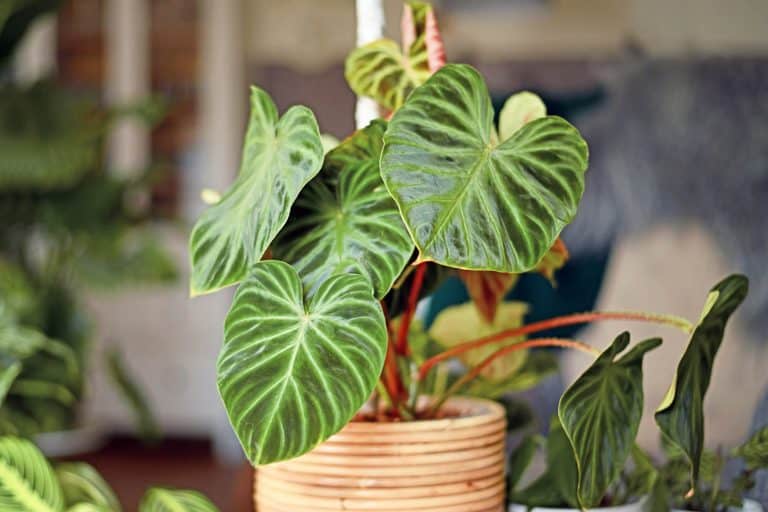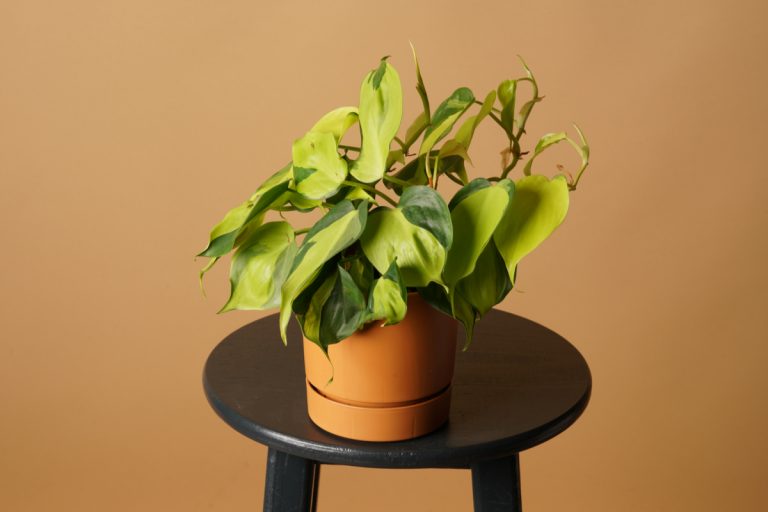Crassula Arborescens (Silver Dollar) – The Complete Care Guide
Crassula Arborescens is an extremely attractive succulent that is also known by a multitude of different names.
You’ll commonly find it referred to as the Silver Jade Plant, the Silver Dollar plant, the Money Plant Chinese Jade, Beestebul, or the Money Tree.
If you’re interested in learning a little bit more about this plant, including how you can grow and care for it at home, then you’ll be pleased to know that this short and simple guide has absolutely all the information that you need!
DISCLAIMER
Some of the links on here are affiliate links and I may earn if you click on them, AT NO EXTRA cost to you. Hope you find the information here useful! Thanks.
Related Articles:
- Crassula Capitella (Campfire Crassula) – A Stunning Succulent
- Scindapsus pictus (Satin Pothos) – How To Grow a Healthy Indoor Plant
- Philodendron Cordatum – The Complete Care Guide
- Scindapsus Pictus Exotica – Complete Growing Guide
- Philodendron Hederaceum – Heartleaf Philodendron Care Guide

All About Crassula Arborescens
These absolutely delightful looking succulents are notable for their round grey leaves. Extremely attractive in appearance, these leaves can grow up to 3 inches long.
As is the case with many succulents you’ll notice that the colouration around the edges of the leaves becomes more intense when they get more sun.
Crassula Arborescens itself is actually something of a succulent shrub or small tree, that can grow up to 4 feet in height.
In spring and summer, they sometimes form white and pink flowers shaped like stars, although these are considered to be somewhat rare in occurrence.
They are generally considered to be fairly resistant to disease and will thrive in dry, well-drained soils.
How to Grow and Care for Crassula Arborescens
Light
As with practically any plant, getting the correct amount of light for your Crassula Arborescens is extremely important. During the absolute hottest part of summer, it’s probably best to make sure that your Crassula Arborescens gets at least some shade.
If the plant is given too much full sunlight then there’s a danger that the leaves can end up scalded and scorched. This is to be avoided, as it can cause unnecessary damage to the plant.
Therefore consider putting Crassula Arborescens in a place in your garden where it’s able to get a little bit of a respite from the sun’s rays. Consider erecting a sunshade if necessary or using a sunblock mesh netting to filter out direct sunlight.

However, bright light is essential to getting the best growth and health from this delightful succulent. If you’re growing these fantastic plants indoors, you want to make sure that you put them in a spot that gives around 6 hours of sunlight per day.
Generally speaking, the more sun you can give to Crassula Arborescens, the better its growth and health will be.
Of course even indoors, too much direct sun can be harmful – but it’s probably quite unlikely that most people will have a spot in their house that gets enough direct sunlight during the day to cause damage.
Soil
Ideally, when it comes to the soil you’ll use a soil formulation that is specially designed for succulents. Crassula Arborescens prefers well-draining soil. Sandy, rocky blends are ideal for this plant.
Purchasing organic succulent soil mixture can ensure a properly balanced soil formulation for healthy plant and root growth.

They are generally better off in neutral or slightly acidic soil – but they’re still actually quite resilient and likely won’t be killed off even with extreme pH levels.
Water
Drainage is of course as essential with Crassula Arborescens as it is with all succulents.
Overwatering Crassula Arborescens is practically a guaranteed way of killing it! Ideally, you should make sure the top inch or so of soil is bone dry before watering.
As is the case with all succulents, Crassula Arborescens is a type of plant that’s especially susceptible to root rot – so it’s absolutely key that they are not left in soaked and waterlogged soil.
If you’re keeping them in a container with a tray or saucer underneath to catch any excess water, make sure to empty it not long after watering to ensure that the plant isn’t left sitting in water.
Colder weather usually means that it’s a good idea to reduce the amount of water that you give Crassula Arborescens.
The colder months mean that there will be less opportunity for water to evaporate for a start – which means that keeping to a summer watering routine in winter could mean you’re putting the health of your plant at risk.
Using a moisture meter will ensure your plant’s roots have enough access to water and are not in excess.

Temperature
If you’re fortunate enough to live in zones 9 through 12 (Hardiness Zones – Geographical Area and Climate), you’ll be able to grow Crassula Arborescens outdoors as a perennial.
However, those living in colder areas will either need to ensure that they bring them in the house for the winter or keep them solely as indoor plants.
Generally speaking, they don’t have very much resistance to frost or cold. This means it’s very important to you keep them above 30 degrees Fahrenheit, or you’ll run the risk of killing the plant entirely.
Fertilizer
Generally speaking, you can avoid fertilizing Crassula Arborescens for the most part. With good soil, good drainage, a decent amount of light and the correct amount of water, Crassula Arborescens tends to be somewhat self-sustaining.
They don’t tend to require as much care as a lot of other plants. Therefore, aside from spring (which is the active growth season for Crassula Arborescens), you can probably avoid using fertilizer entirely.
When you do choose to fertilize this plant be sure to use a fertilizer that clearly states that it’s suitable for succulents.
Humidity
Crassula Arborescens, as with most species of Crassula, overall prefers low humidity. However, they can actually perform extremely comfortable even in more humid climates. They are usually perfectly fine with the humidity and temperature of the average house.
If you’re living in an area with a temperate and dry climate, you might want to get a mist humidifier to provide your plant with optimal growing conditions.

How to Propagate Crassula Arborescens

Propagation of Crassula Arborescens is usually a fairly simple affair and is a similar method to pretty much all Crassula plants.
Of course, it’s possible to grow Crassula Arborescens from seed but it’s actually a lot more common for them to be grown from either leaf or stem cuttings.
This is because it’s actually really easy to propagate Crassula in this way! Propagation by means of leaf cuttings is probably the easiest way – so let’s have a quick look at how to do it!
Propagation by Leaf Cuttings
To propagate by means of leaf cuttings:
- Essentially all you need to do is remove a healthy leaf.
- Leave the leaf indoors somewhere warm for around a week (During this time a callus will form over the cut, which both helps the leaf take root and also prevents any rot from occurring).
- Now, plant the calloused end of the leaf in a small amount of a slightly damp potting mixture.
- Left in a bright and warm spot, this leaf will actually begin to sprout roots within just a few weeks!
- From this point on a little bit of watering is pretty much all you’ll need to further the growth of these roots.
- Once the roots are a few inches long – you’ll be able to tell by how well they hold on to the soil when you give the cutting a gentle pull, the plants can be safely transplanted into a larger container and can then be cared for as if they were any other plant.
Conclusion
Hopefully, this article has helped you learn everything you need to know to get started growing Crassula Arborescens!


![Philodendron Brasil – Top 7 Simple Care Tips [2022 Guide]](https://aboveandbeyondgardening.com/wp-content/uploads/2022/02/Philodendron-Brasil-768x512.jpg)
![How To Trim Basil Plant Without Killing It & What To Avoid! [2023]](https://aboveandbeyondgardening.com/wp-content/uploads/2022/10/how-to-trim-basil-plant-without-killing-it-768x513.jpg)


![Can You Grow Tomatoes In A Grow Tent? + Tips For Quick Growth [2022]](https://aboveandbeyondgardening.com/wp-content/uploads/2022/08/can-you-grow-tomatoes-in-a-grow-tent-9-768x512.jpg)
